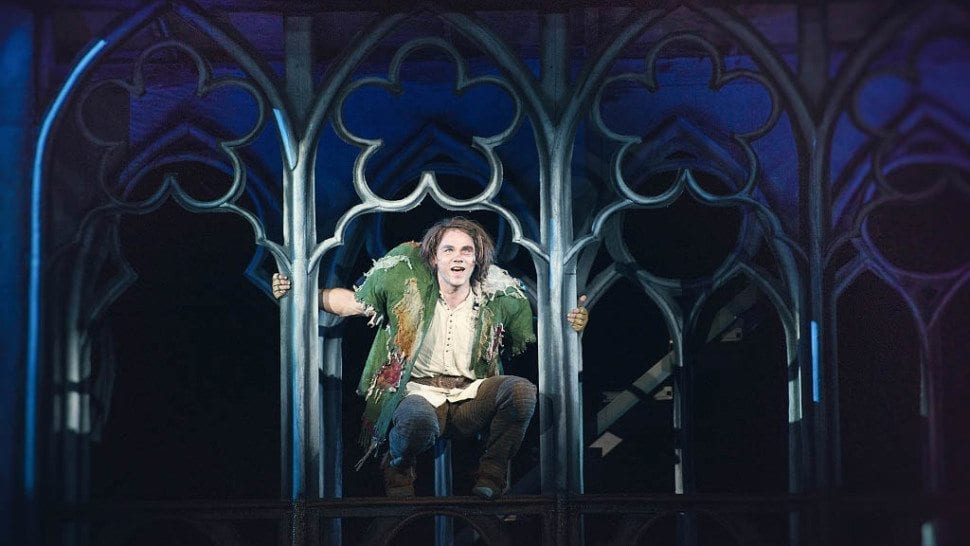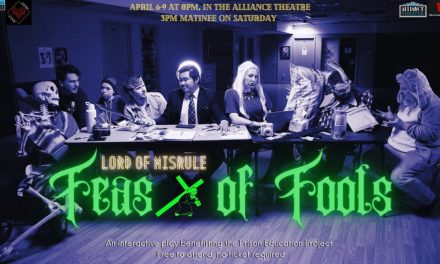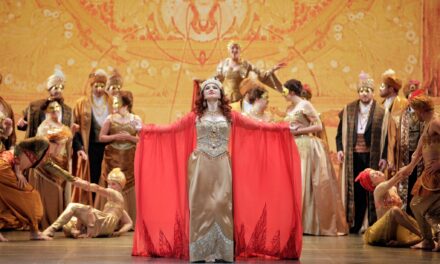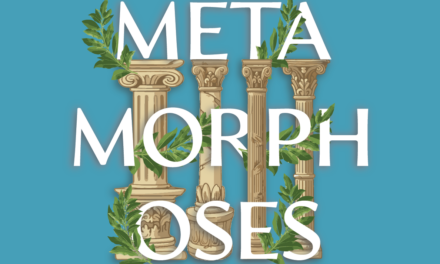IVINS – Finally joining Peter Pan and Tarzan, The Hunchback of Notre Dame is a strong addition to the classic tales on stage this season at Tuacahn Amphitheatre. Following the 1831 Victor Hugo novel, The Hunchback of Notre Dame tells the story of Quasimodo (played by Julian Decker), the bell ringer of the Notre Dame cathedral, and the gypsy temptress, Esmeralda (Summer Naomi). With music by Alan Menken and lyrics by Stephen Schwartz featured in the 1996 Disney film (as well as new additions), the musical soars with an emotional score depicting the beautifully tragic story of love, desire, and justice.

Show closes October 15, 2016.
On the streets of 15th century Paris, the deformed infant, Quasimodo, is taken in by Dom Claude Frollo (Aloysius Gigl), archdeacon of the cathedral Notre Dame. Frollo acts as a father figure to Quasimodo, but unjustly traps him in the attic of the cathedral, seemingly for his protection due to his abnormalities. Quasimodo longs for a life outside of the cathedral, but is shocked by a world he’s never known when finally experiencing it. Upon meeting Esmeralda, the lives of all of the characters are altered forever, due to the alluring affect her presence has on them.
As Esmeralda, Naomi becomes the ultimate temptress causing most men she encounters to fall in love with her, and all to be enchanted by her. I loved Naomi’s feminist portrayal of her strong and independent female character. Esmeralda’s passionate emotions always felt justified, and although the character’s beauty and fierce nature is emphasized as distinct character traits, Naomi was skilled at keeping Esmeralda’s innate kindness and compassion at the heart of the character, making her a beacon of the best of humanity. Although I was unimpressed by Naomi’s singing voice, her acting outshined this shortcoming.
On the contrary, Gigl’s beautiful classical voice was enough for me to be captivated by him, especially exemplified in the musical number “Hellfire.” I was also impressed by the intense struggle his character feels between his desires for Esmeralda and his commitments to the church and his own sense of morality. This contradictory nature is also characterized by Gigl’s clear depiction of Frollo’s love for Quasimodo, but true need for control and power over him.
Decker’s portrayal of Quasimodo is also outstanding. I was moved throughout because of Decker’s authentic depiction of his character’s powerful emotions. Decker made it extremely easy to feel empathy for Quasimodo, forcing me to deeply connect with this character. This was also because of the realistic representation of Quasimodo’s physical defects, as well as a unique mentality going beyond his physical disorders. I particularly liked the transformation into the deformed character in the song “Sanctuary.” This tactic was simple, but very effective, and helped to emphasize the grappling theme of the song, and then further throughout the play of “What makes a monster and what makes a man?” Decker also excelled in the number “Made of Stone,” where he becomes who he truly is, for better or for worse, moving him into action and creating a heart-rending performance.
Also impressive in his role was David Sattler as Captain Phoebus de Martin. I most enjoyed seeing the strong reversal in Sattler’s character when he chooses to go against his orders to do what he feels is right. His character was particularly important in presenting a moral dilemma, thus allowing the audience to reflect on what is right and wrong in the context of the show.
Though not quite as spectacular as the other shows at Tuacahn this summer, the scenic design by Brad Shelton is still pleasing. The beautiful gothic cathedral that takes up almost the entirety of the stage is extremely detailed and perfectly symmetrical. In addition, the gargoyles and other figures, as well as the imposing large bells created a stunning vision. I was also impressed with the live horses that were used in the show, creating a realistic atmosphere.
The use of pyrotechnics was also captivating, with various gypsies using different types of smoke and fireworks to convey their magic. Aerial fireworks incorporated into the musical number “Topsy Turvy,” was also a nice touch to create an awe-struck feeling. There seemed to be a consistent use of fire within the design elements that emphasized fire as a main theme within the production, conveying a sense of danger and hell. The most remarkable of these moments were when the brothel appeared to actually be on fire, or when Esmeralda is supposed to be burned at the stake. All of these aspects are greatly accentuated by Nick Van Houten’s lighting design. I most enjoyed the dark red lighting on the set, again emphasizing characteristics of fire, lava, and passion.
My favorite component of the production was the outstanding music, directed by Chris Babbage. The large and professional sounding choir added an immense amount of depth and richness to the songs, and I enjoyed being able to see them during the show, as they sat somewhat camouflaged behind the cathedral. The ensemble voices also blended together skillfully, creating magnificent full choral numbers that were extremely efficacious and cathartic. Of this mostly incredible score, I will say that a handful of the musical numbers are disappointing. These are mostly the lighter and upbeat songs that are not featured in the Disney film. Contrasted so starkly with grand and show stopping numbers, such as the song “Esmeralda” at the end of act one, the cheesy lyrics and lack of complexity in numbers like “Top of the World,” stand out to me as glaring flaws in the script. However, director Tim Threlfall, Babbage, and the cast are able to combat this well, while still infusing emotion and energy into these numbers.
This classic story has always been one of my favorites. Thus, I was thrilled to see that Tuacahn’s production, with the influential direction from Threlfall, was able to bring such a prodigious story justice. The Hunchback of Notre Dame is powerful, poignant, and dark, full of emotion and intensity. With a deeply moving and thoughtful script by Peter Parnell and relevant commentary on religion and morality, the production has left me pondering the reality of what truly makes a monster and what makes a man. Yet, readers should be aware that because of adult themes, The Hunchback of Notre Dame is not as suitable for children as Tuacahn’s other selections.





